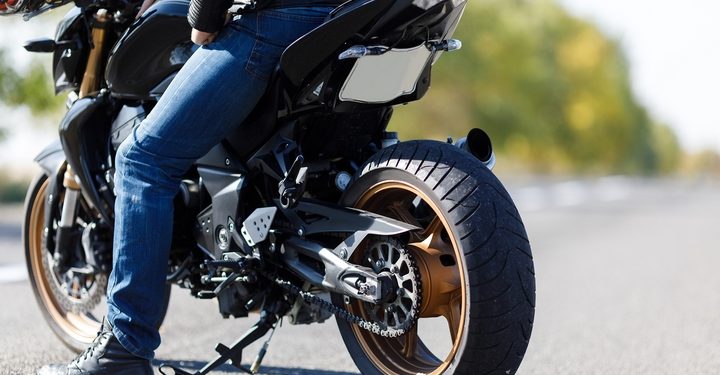Motorcycle Accident Statistics: A Guide to Motorcycle Fatality Rates

Motorcycle culture is an exciting, rebellious trend that began growing in popularity, especially after the release of the show Sons of Anarchy in 2008. However, this newfound attraction to motorcycles across North America can be a bit troubling, since motorcycle accident statistics dictate one in ten traffic deaths include a motorcycle in Canada.
With the overall increase of motor vehicles on the road due to a growing population, this can be a concern for motorcycle riders (refer below for the increasing trend of motorcycle and moped registration, resting at 720,549 registrations in 2017). This report will analyze motorcycle accident statistics, and use these figures to examine the role that motorcycles play in car accidents in Canada.
Motorcycle Accident Statistics
The Ontario Provincial Police (OPP) released data on motorcycle accident statistics, stating that 2017 had higher numbers than average when it came to accidents. When it came to motorcycles, there were about 48 motorcycle deaths on the road. The study also found that in about half of the reported cases (22 cases), the driver was not at fault. Another issue that officers noticed was that many people riding motorcycles were not wearing a helmet at the time of the accident, putting themselves at an unnecessary risk.
South of the border, we see more motorcycles on the road but a largely consistent fatality rate (refer below for a breakdown of the motorcyclist fatality rate and registered vehicle list). It’s possible that while the motorcycle culture is becoming more popular in the U.S. in a large part because of the media, the popularity surrounding motorcycle safety is also on the rise.
| Motorcycle Fatality Rates, 2007 - 2016 | Motorcycle Fatality Rates, 2007 - 2016 | |
| Year | Motorcycle Fatalities | Registered Motorcycles |
| 2007 | 5,174 | 7,138,476 |
| 2008 | 5,312 | 7,752,926 |
| 2009 | 4,469 | 7,929,724 |
| 2010 | 4,518 | 8,009,503 |
| 2011 | 4,630 | 8,437,502 |
| 2012 | 4,986 | 8,454,939 |
| 2013 | 4,692 | 8,404,687 |
| 2014 | 4,594 | 8,417,718 |
| 2015 | 5,029 | 8,600,936 |
| 2016 | 5,286 | 8,679,380 |
Source: U.S. Department of Transportation, National Highway Traffic Safety Administration; Federal Highway Administration; data lifted from: Insurance Information Institute.
While it is uplifting to see that there are no staggeringly high rates of motorcycle fatalities, it is important to understand how to exercise motorcycle safety on the road to protect yourself and others. Motorcycles are popular for a reason, but their riders must have a great deal of respect for them and for others they share the road with.
Number of Motorcycles in Canada
With this rapidly increasing population (the reported figure in 2018 was about $37.0 million, a 0.90% jump from 2017, according to World Population Review), there are many more cars on the road and higher rates of car accidents. The city with the largest population in Canada is Toronto with approximately 2.6 million people. These dense cities can cause problems like urban sprawl where vehicles moving from surrounding neighbourhoods into the downtown core during rush hour will back up highways and cause bumper-to-bumper traffic.
When all of these vehicles (especially motorcycles) are tightly lumped together, that is when motor vehicle accidents are most likely to happen. Motorcycle drivers sometimes pull off stunts in heavy traffic and try to weave between cars, which increases the likelihood of an accident monumentally. The fact that motorcycles are an exposed type of vehicle without the proper armor surrounding the rider can cause much more damage to the driver when an accident does happen.

The number of motorcycles in Canada has not changed much over the past few years.
Fewer people in the millennial demographic are getting their driver’s license for a number of reasons. The steep costs of owning a motor vehicle and insuring it tend to be reason enough, though the proliferation of ride-sharing phone apps make getting around much easier. There have been some higher numbers of reported motorcycle accidents and injuries in Canada in 2017. There is also a consistent level of accidents in the U.S. despite the growing amount of motorcycle registrations.
Risks of Riding a Motorcycle
Being on a motorcycle puts you at more of a risk of being involved in a car accident than driving an actual car, largely because of the exposed nature of the vehicle and the fact that motorcycles tend to be less visible than an entire car.
There are a few safety measures you can take to prevent car accidents if you are a motorcycle enthusiast:
| Risks and Safety Measures of Riding a Motorcycle | |
| Awareness | One of the most important habits to have on bikes is to be vigilant and constantly aware of your surroundings. |
| Blind Spots | Driving while assuming that cars cannot see you by avoiding blind spots and giving them more space is a good way to avoid a collision. Being vigilant also extends to obstructions on the road, like potholes and debris, which will have more of an impact on motorcycles than on cars. |
| Stop Signs | When approaching a stop, ensure that your hands are hovering over the hand brakes so that you can stop at a moment’s notice. |
| Buffers | Knowing what is ahead of you is essential, but you also have to create a broad buffer between yourself and the car behind you so that you can avoid being rear-ended. |
| Sharp Turns | Do not take sharp turns too tightly or else you can tip your motorcycle at top speeds. |
| Risks | It is also important to avoid risky behaviour in general, such as weaving between cars to save time. If a car were to suddenly pull out in front of you or a parked car opened their door without warning, the accident could cause more damage and harm to yourself than to the vehicle you have collided with. |
| Drunk Driving | One of the most obvious tips for motorcycle safety is to not drink and drive. There are many people who assume that they can handle their alcohol and can drive effectively, however alcohol severely diminishes your reaction time and judgement. |
| Protective Gear | Wear the right protective gear. Unfortunately, there are quite a few motorcyclists who ride without even an helmet. When you get on a motorcycle, you should be effectively equipped with a helmet, the proper footwear, heavy jacket or body armour, protective leathers, etc. Ensure that your gear as well as your bike are properly maintained for high performance. |


